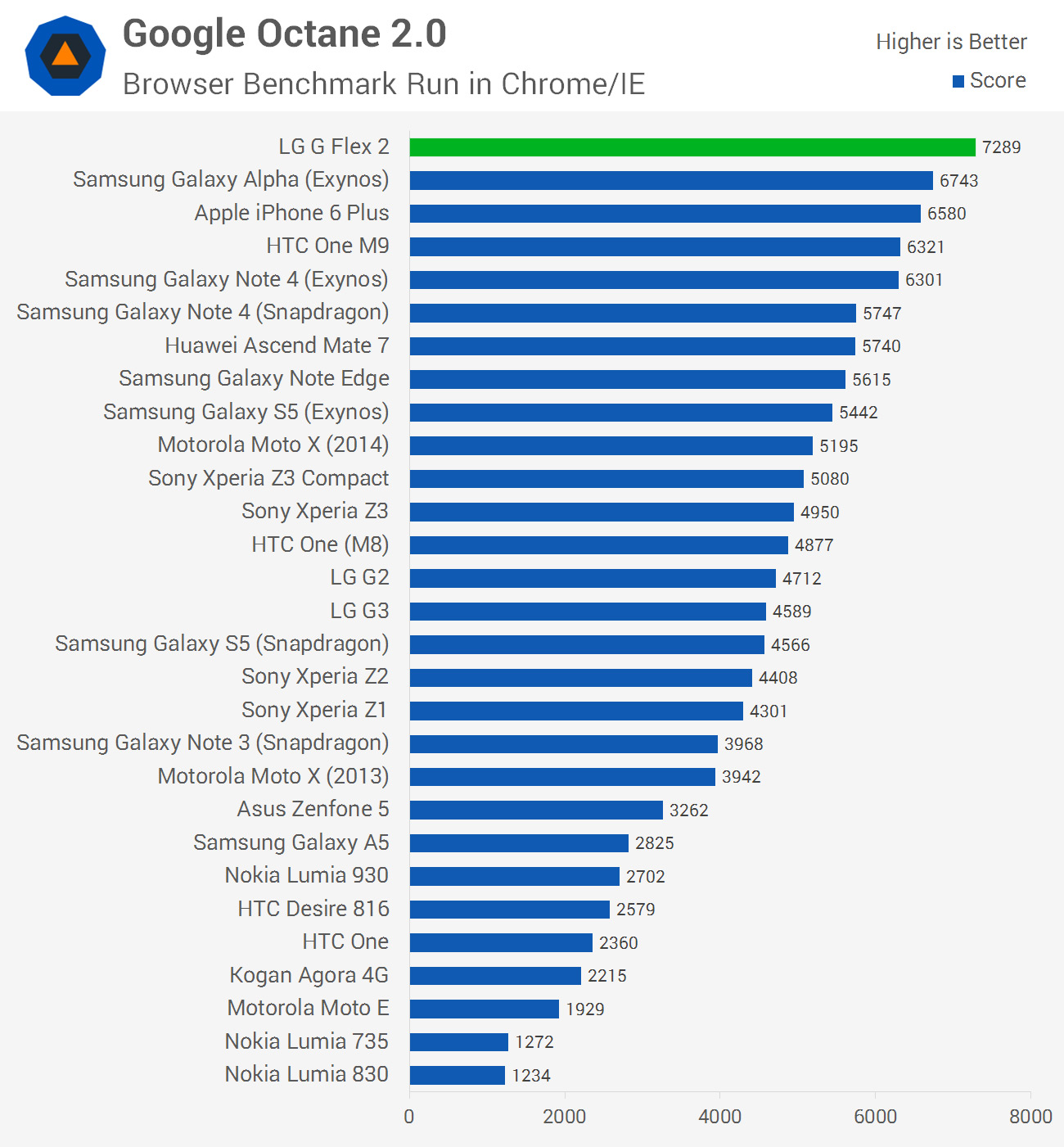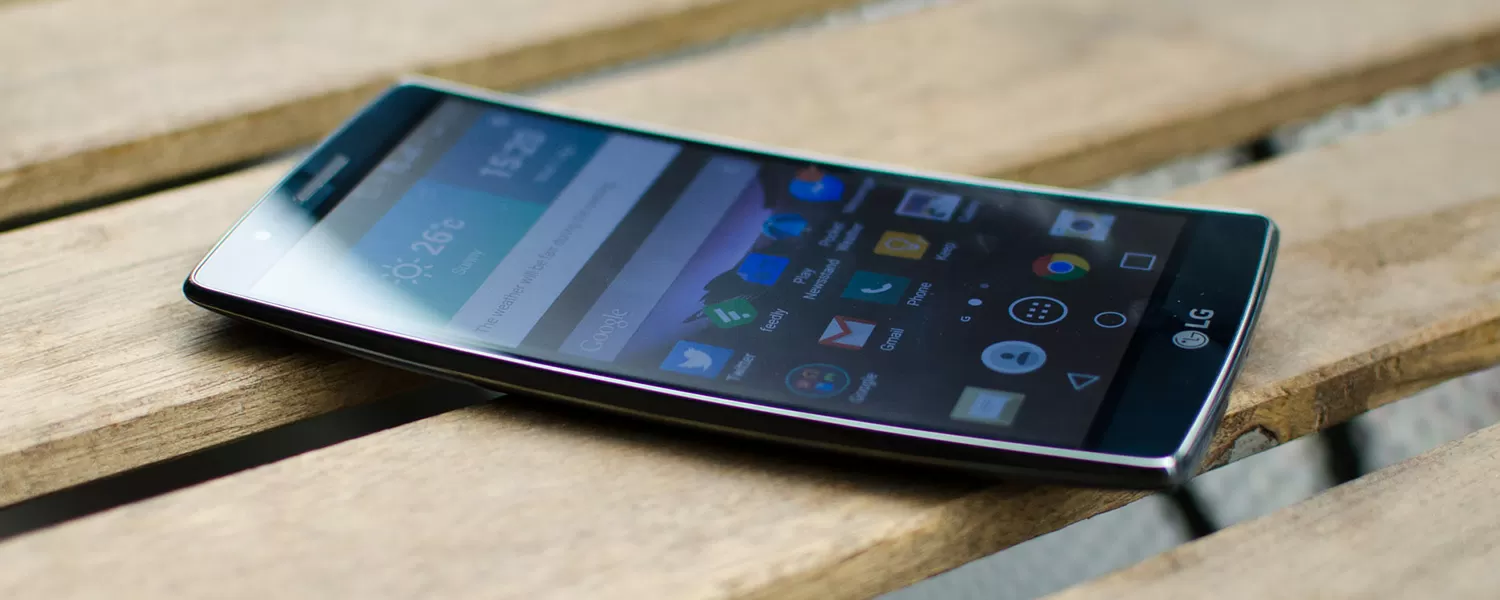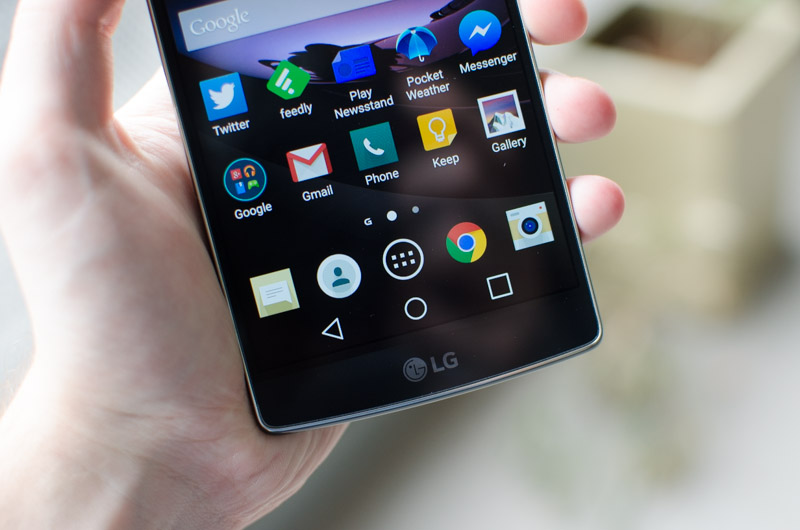Hardware Overview & CPU Performance
Inside the G Flex 2 is Qualcomm's Snapdragon 810 SoC, which we first reviewed in the HTC One M9. The implementation of the SoC was slightly difference in HTC's flagship, due to aggressive CPU and GPU downclocking in some circumstances, which we shouldn't see as much of in the G Flex.
The Snapdragon 810 features an eight-core CPU made up of a quad-core ARM Cortex-A57 cluster clocked at 1.96 GHz and a quad-core ARM Cortex-A53 CPU clocked at 1.56 GHz. There's also an Adreno 430 GPU clocked at 600 MHz, and a dual-channel 32-bit LPDDR4-1600 memory controller providing 25.6 GB/s of bandwidth. As the SoC uses ARMv8 CPU cores, it's fully 64-bit compliant.
There's also support for LTE Category 9 in the Snapdragon 810, which supports connections of 450 Mbps downstream and 50 Mbps up. Other connectivity features include Wi-Fi 802.11a/b/g/n/ac, Bluetooth 4.1, and A-GPS+GLONASS. If you want to read more about the Snapdragon 810, check out my review of the HTC One M9 which goes in to more detail on Qualcomm's flagship silicon.
As for hardware specific to the G Flex 2, we're seeing either 2 or 3 GB of RAM depending on whether you get a model with 16 or 32 GB of internal storage. If 32 GB isn't enough for you, there's also microSDXC card support via a slot under the back cover. You also get NFC, which is standard for a flagship smartphone, and infrared for controlling home theatre equipment through a built-in app.
As with many phones today, there are several variations of the LG G Flex 2, each supporting a different range of LTE bands. Rather than listing all the variants here, check with your carrier before purchasing the G Flex 2 to ensure there's good compatibility.
Before I get straight into the benchmarks, it's worth talking about how the G Flex 2 performs in a general sense. While the Snapdragon 810 is undoubtedly a powerful chip, LG hasn't done a great job of optimizing their skin, so after a few weeks of use the G Flex 2 can feel a bogged down. This manifests itself as a somewhat laggy interface on occasion, and it can slow down multi-tasking that is otherwise extremely snappy.
Luckily the G Flex 2 isn't naturally a laggy device, meaning most of the time it'll feel blazing fast. However you'd expect a modern flagship to be fast all the time, so I hope LG can address the occasional slowdown through a software update.







Due to less aggressive throttling, the LG G Flex 2 is 12% faster than the HTC One M9 in CPU limited workloads, despite the One M9 using the same SoC. This lead extends to 15% when looking across each individual test in the system benchmarks we run, which factors in NAND, memory and (sometimes) GPU performance. All things considered this is a pretty good result for the G Flex 2.
Compared to the LG G3, which used Qualcomm's Snapdragon 801 SoC, we're seeing gains of 49% on the CPU side and 44% from a general system perspective, which again is a great result for a device less than a year newer. For those interested, the G Flex 2 was around 25-30% faster than the Snapdragon 805 Galaxy Note 4, albeit with a more limited sample of benchmarks to compare.

